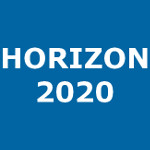In Situ Time-of-Flight Mass Spectrometry of Ionic Fragments Induced by Focused Electron Beam Irradiation: Investigation of Electron Driven Surface Chemistry inside an SEM under High Vacuum
Jurczyk, Jakub ; Pillatsch, Lex ; Berger, Luisa ; Priebe, Agnieszka ; Madajska, Katarzyna ; Kapusta, Czeslaw ; Szymanska, Iwona B. ; Michler, Johann ; Utke, Ivo
Resumen: Recent developments in nanoprinting using focused electron beams have created a need to develop analysis methods for the products of electron-induced fragmentation of different metalorganic compounds. The original approach used here is termed focused-electron-beam-induced mass spectrometry (FEBiMS). FEBiMS enables the investigation of the fragmentation of electron-sensitive materials during irradiation within the typical primary electron beam energy range of a scanning electron microscope (0.5 to 30 keV) and high vacuum range. The method combines a typical scanning electron microscope with an ion-extractor-coupled mass spectrometer setup collecting the charged fragments generated by the focused electron beam when impinging on the substrate material. The FEBiMS of fragments obtained during 10 keV electron irradiation of grains of silver and copper carboxylates and shows that the carboxylate ligand dissociates into many smaller volatile fragments. Furthermore, in situ FEBiMS was performed on carbonyls of ruthenium (solid) and during electron-beam-induced deposition, using tungsten carbonyl (inserted via a gas injection system). Loss of carbonyl ligands was identified as the main channel of dissociation for electron irradiation of these carbonyl compounds. The presented results clearly indicate that FEBiMS analysis can be expanded to organic, inorganic, and metal organic materials used in resist lithography, ice (cryo-)lithography, and focused-electron-beam-induced deposition and becomes, thus, a valuable versatile analysis tool to study both fundamental and process parameters in these nanotechnology fields.
Idioma: Inglés
DOI: 10.3390/nano12152710
Año: 2022
Publicado en: Nanomaterials 12, 15 (2022), 2710 [17 pp.]
ISSN: 2079-4991
Factor impacto JCR: 5.3 (2022)
Categ. JCR: PHYSICS, APPLIED rank: 39 / 160 = 0.244 (2022) - Q1 - T1
Categ. JCR: NANOSCIENCE & NANOTECHNOLOGY rank: 51 / 107 = 0.477 (2022) - Q2 - T2
Categ. JCR: CHEMISTRY, MULTIDISCIPLINARY rank: 58 / 178 = 0.326 (2022) - Q2 - T1
Categ. JCR: MATERIALS SCIENCE, MULTIDISCIPLINARY rank: 110 / 343 = 0.321 (2022) - Q2 - T1
Factor impacto CITESCORE: 7.4 - Chemical Engineering (Q1) - Materials Science (Q1)
Factor impacto SCIMAGO: 0.811 - Chemical Engineering (miscellaneous) (Q1) - Materials Science (miscellaneous) (Q2)
Financiación: info:eu-repo/grantAgreement/EC/H2020/722149/EU/Low energy ELEctron driven chemistry for the advantage of emerging NAno-fabrication methods/ELENA
Financiación: info:eu-repo/grantAgreement/EC/H2020/872494/EU/Irradiation driven nanofabrication: computational modelling versus experiment/RADON
Tipo y forma: Artículo (Versión definitiva)
 Debe reconocer adecuadamente la autoría, proporcionar un enlace a la licencia e indicar si se han realizado cambios. Puede hacerlo de cualquier manera razonable, pero no de una manera que sugiera que tiene el apoyo del licenciador o lo recibe por el uso que hace.
Debe reconocer adecuadamente la autoría, proporcionar un enlace a la licencia e indicar si se han realizado cambios. Puede hacerlo de cualquier manera razonable, pero no de una manera que sugiera que tiene el apoyo del licenciador o lo recibe por el uso que hace.
Exportado de SIDERAL (2024-03-18-15:21:21)
Visitas y descargas
Idioma: Inglés
DOI: 10.3390/nano12152710
Año: 2022
Publicado en: Nanomaterials 12, 15 (2022), 2710 [17 pp.]
ISSN: 2079-4991
Factor impacto JCR: 5.3 (2022)
Categ. JCR: PHYSICS, APPLIED rank: 39 / 160 = 0.244 (2022) - Q1 - T1
Categ. JCR: NANOSCIENCE & NANOTECHNOLOGY rank: 51 / 107 = 0.477 (2022) - Q2 - T2
Categ. JCR: CHEMISTRY, MULTIDISCIPLINARY rank: 58 / 178 = 0.326 (2022) - Q2 - T1
Categ. JCR: MATERIALS SCIENCE, MULTIDISCIPLINARY rank: 110 / 343 = 0.321 (2022) - Q2 - T1
Factor impacto CITESCORE: 7.4 - Chemical Engineering (Q1) - Materials Science (Q1)
Factor impacto SCIMAGO: 0.811 - Chemical Engineering (miscellaneous) (Q1) - Materials Science (miscellaneous) (Q2)
Financiación: info:eu-repo/grantAgreement/EC/H2020/722149/EU/Low energy ELEctron driven chemistry for the advantage of emerging NAno-fabrication methods/ELENA
Financiación: info:eu-repo/grantAgreement/EC/H2020/872494/EU/Irradiation driven nanofabrication: computational modelling versus experiment/RADON
Tipo y forma: Artículo (Versión definitiva)
Exportado de SIDERAL (2024-03-18-15:21:21)
Enlace permanente:
Visitas y descargas
Este artículo se encuentra en las siguientes colecciones:
Artículos
Registro creado el 2022-12-13, última modificación el 2024-03-19
